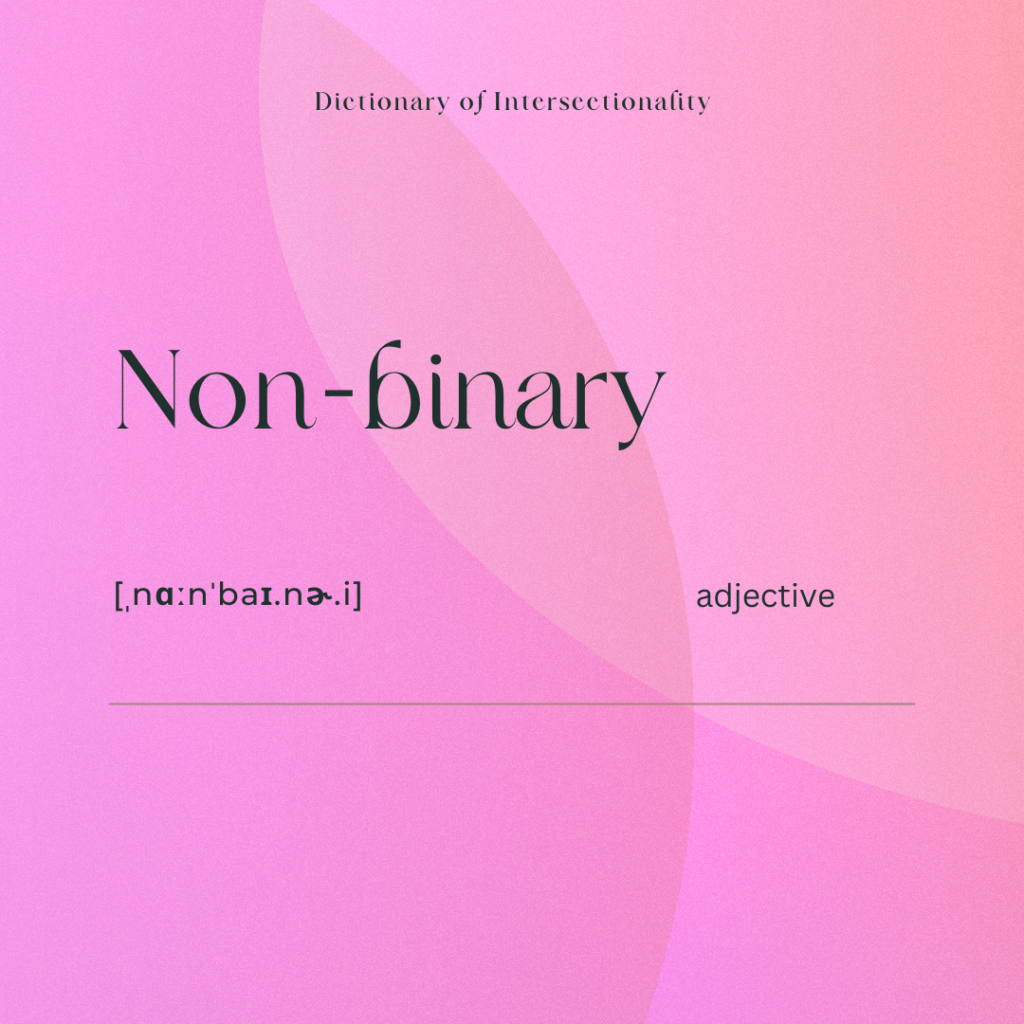
Non-binary describes any gender identity which does not fit the male and female binary spectrum. This means that their experiences are not (exclusively) aligned with either side of female/male or woman/man. It is used as an adjective.
Over the last few years, the development shifted away from strict gender roles. This may give the impression that non-binary is a relatively new concept as gender-defining terminology continues to expand alongside transgender activism in Western societies.
The term ‘genderqueer’ refers to people who have gender identities other than male and female. It first emerged in a newsletter from a transgender rights activist organization in New York City in 1995. Today, the term ‘nonbinary’ is being used in the same matter.
It must also be recognized that gender identities outside of the typical binary have existed for centuries in non-eurocentric cultures. Traditionally, two-spirit people would often perform the activities of both gender individuals in their tribe and express this variation through their clothing, social roles, and lifestyle. The interpretation differs depending on the cultural context of the specific tribe or nation it is used in.
Still, the legal recognition of non-binary people is superficial and differs between countries. Although the Office of the High Commissioner for Human Rights declares the legal gender recognition, only the following countries acknowledge it: Austria, Iceland, India, Pakistan, Uruguay, also in some parts of Australia, Canada, and the USA. In South Asia, already multiple examples of officially recognized diverse gender categories exist.
Good to know: a non-binary person might prefer gender-neutral pronouns. To avoid making assumptions, it’s advised to use the pronoun ‘they’ (or the person’s name!) until knowing the pronoun that they identify with.
Identifying as non-binary can include:
-Transgender (not feeling aligned with the sex assigned at birth)
-Expression of a combination of masculinity and femininity (androgynous appearance), or neither
-Intergender: having a gender between male and female
-Agender: not identifying with any gender at all
-Multiple gender identities with or without variation overtime (genderfluid).
See more resources
Fontanella, L., Maretti, M. & Sarra, A. Gender fluidity across the world: a Multilevel Item Response Theory approach. Qual Quant 48, 2553–2568 (2014). Retrieved January 3, 2023, from https://doi.org/10.1007/s11135-013-9907-4
OULGBTQ+ Society. Retrieved January 3, 2023, from https://www.oulgbtq.org/trans.html
Transstudent. Retrieved January 3, 2023, from https://transstudent.org/about/definitions/
Gender Wiki – Non-binary. Retrieved January 3, 2023, from https://gender.fandom.com/wiki/Non-binary
Transactual – Facts about trans lives and trans rights. Retrieved January 4, 2023, from https://www.transactual.org.uk/facts-about-trans
Point Foundation – History and Definition of nonbinary. Retrieved January 4, 2023, from https://pointfoundation.org/community/blog/resources/nonbinary-definition-history
